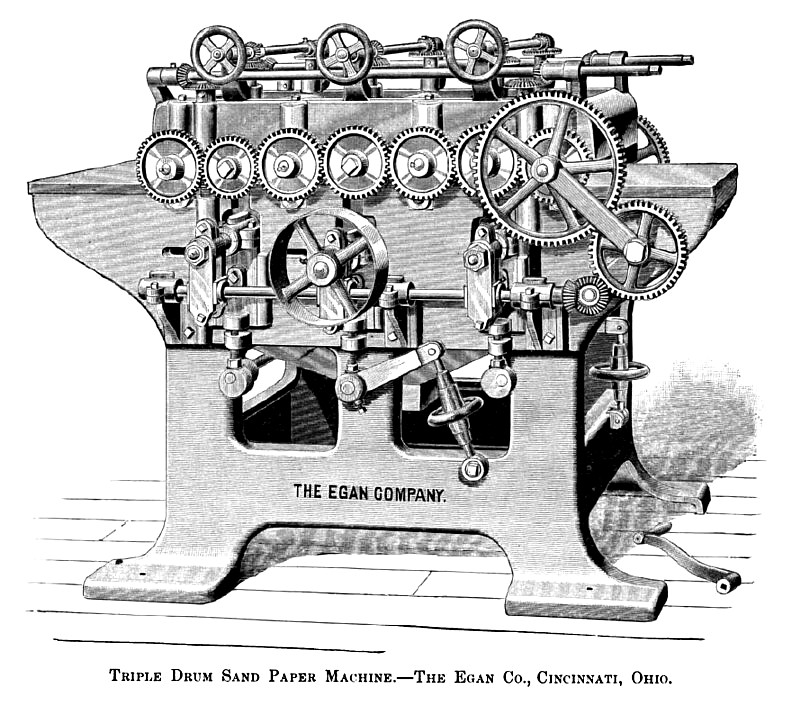|
Title: |
1890 Article-Egan Co., Triple Drum Sandpaper Machine |
|
Source: |
Industry Magazine, Dec 1890, pg. 78 |
|
Insert Date: |
12/9/2012 8:24:55 PM |
We have received from the Egan Company, at Cincinnati, the above engraving of what may be called a wood polishing machine. They are familiarly known at the East as "ganders," because the drums are covered with sand paper. Considering the functions, movements and pieces involved in the machine, it is one of extremely ingenious design, and as to efficiency for finishing cabinet or joiner work, cleaning off doors, blinds, etc., no one will question that, who has had any experience with machine sand papering. The same paper will, on a machine, do ten times as much work as it will in ordinary hand use, and a machine will do as much as ten men, which if figured out to a result seems marvelous. It is a case where handwork bears no comparison.
About twenty-five years ago sandpaper drums began to appear in various woodworking factories. At first they were much like a grindstone, that is, a plain buffing wheel on which the work was held by hand. First a layer or two of batting was tacked on the wheels, then a layer of i: ticking," and then canvas, on which the sandpaper was glued. When the paper was worn, another layer was placed on top, until the face became stiff, then the outer band was stripped off, soaked in water to remove the sand paper, and another round began.
To us "old timers" it is a matter of amazement to look at the machine illustrated at the head of this article, and consider what one generation can bring forth.
We have just built a small house, the first one, as we believe, ever erected on this Coast by an editor. It seems a fair house in some respects, and might be, if it were not that in early times we learned "wood-working," not putting up "mill stuff," but regular old-fashioned woodworking, and it is hard to become accustomed to the "corduroy" surfaces of our new tenement. It may be artistic, but if the mill man who prepared the stuff does not buy a "sander," we must pronounce him a fraud, and bestow future patronage elsewhere.
On this Coast, where nearly all stuff is "worked green" or wet, some kind of finishing is necessary for decent work. This we ventured to suggest to the carpenter who built the house above mentioned, who said: "Oh yes, we can go over the work with a smooth plane." The whole interior of a house with a smooth plane, when one could run the "whole house" through the machine above in sixty minutes! It was a Chinese proposal, certainly.
We have looked all over the drawing above, traced out all the adjustments and details of the machine, and must admit that the Egan Company, who were among the first to develop power sand-papering processes, have in this case added all that can have any useful function. The machines are made to prepare pieces from 30 to 46 inches wide, and to 4 inches thick, and operate at a rate and in a manner that leaves no excuse for "corduroy " finish. |
|
 1890 Egan Co., Triple Drum Sandpaper Machine
1890 Egan Co., Triple Drum Sandpaper Machine
|
|